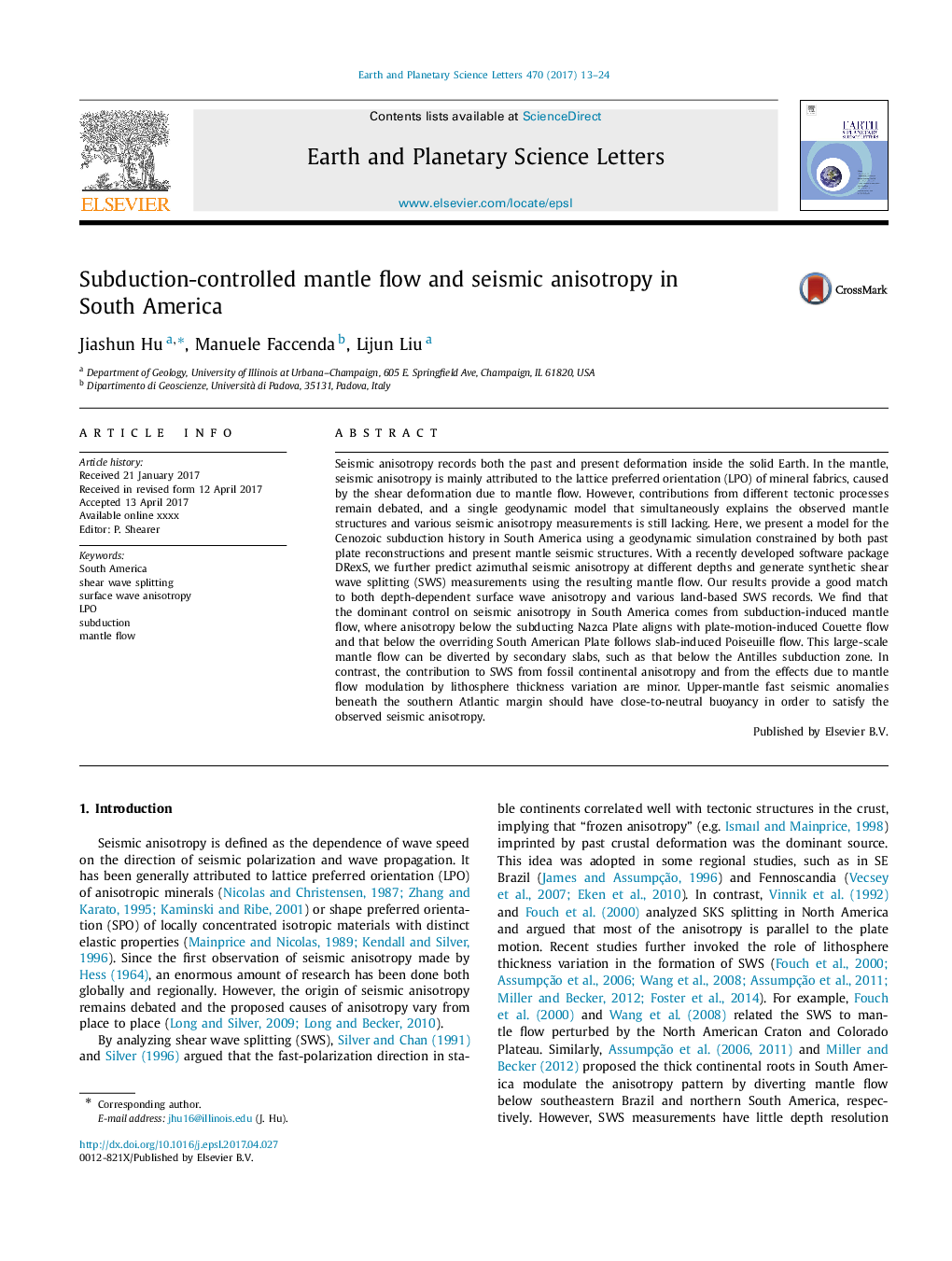| Article ID | Journal | Published Year | Pages | File Type |
|---|---|---|---|---|
| 5779616 | Earth and Planetary Science Letters | 2017 | 12 Pages |
Abstract
Seismic anisotropy records both the past and present deformation inside the solid Earth. In the mantle, seismic anisotropy is mainly attributed to the lattice preferred orientation (LPO) of mineral fabrics, caused by the shear deformation due to mantle flow. However, contributions from different tectonic processes remain debated, and a single geodynamic model that simultaneously explains the observed mantle structures and various seismic anisotropy measurements is still lacking. Here, we present a model for the Cenozoic subduction history in South America using a geodynamic simulation constrained by both past plate reconstructions and present mantle seismic structures. With a recently developed software package DRexS, we further predict azimuthal seismic anisotropy at different depths and generate synthetic shear wave splitting (SWS) measurements using the resulting mantle flow. Our results provide a good match to both depth-dependent surface wave anisotropy and various land-based SWS records. We find that the dominant control on seismic anisotropy in South America comes from subduction-induced mantle flow, where anisotropy below the subducting Nazca Plate aligns with plate-motion-induced Couette flow and that below the overriding South American Plate follows slab-induced Poiseuille flow. This large-scale mantle flow can be diverted by secondary slabs, such as that below the Antilles subduction zone. In contrast, the contribution to SWS from fossil continental anisotropy and from the effects due to mantle flow modulation by lithosphere thickness variation are minor. Upper-mantle fast seismic anomalies beneath the southern Atlantic margin should have close-to-neutral buoyancy in order to satisfy the observed seismic anisotropy.
Related Topics
Physical Sciences and Engineering
Earth and Planetary Sciences
Earth and Planetary Sciences (General)
Authors
Jiashun Hu, Manuele Faccenda, Lijun Liu,
